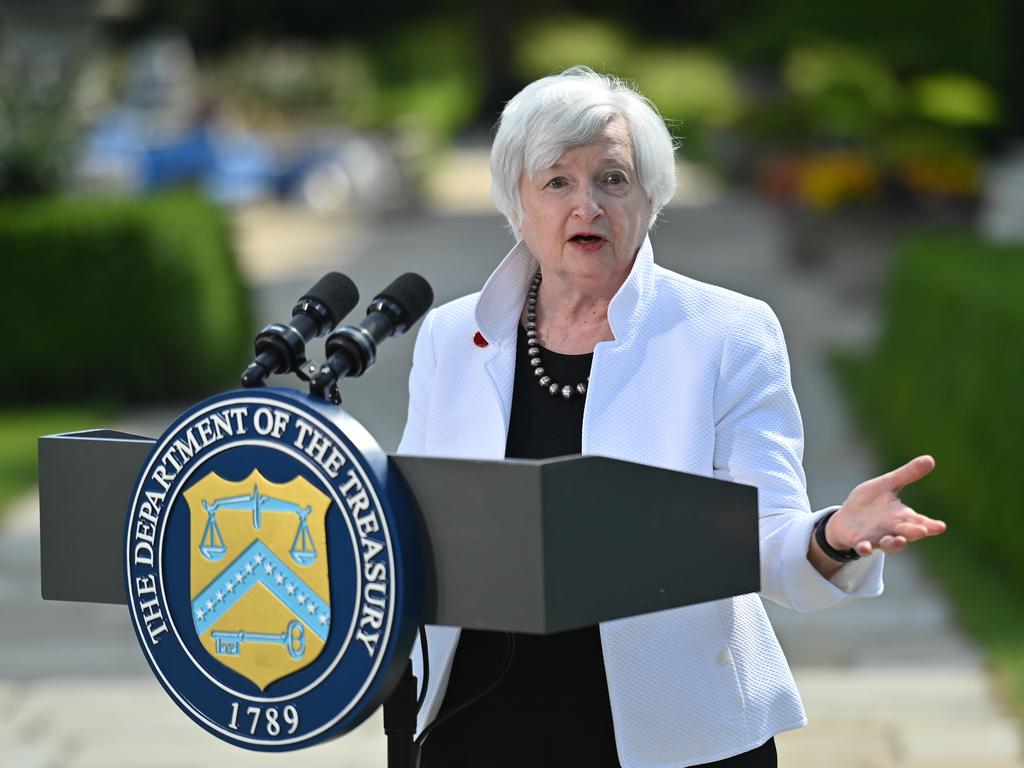Australian shares to shine amid mild inflation
The Australian sharemarket is headed for a period of outperformance as higher inflation hits, according to market experts.

The Australian sharemarket is headed for a period of outperformance as higher inflation hits, according to market experts.
A push into commodities and energy stocks, alongside a further shift into financials as part of the rotation away from growth, will see the local sharemarket emerge from a decade of underperformance, Fidelity portfolio manager Kate Howitt said.
“For most of the past decade our market has struggled because our tech weightings are so much smaller than in the US.
“If we’re now at a time when inflation might be providing a tailwind to commodities or energy stocks, and if people are seeking out that contrarian value/cyclical side of the market, which will show up in our large financials weighting, then we’ve got a market that should be positioned to do fairly well in a moderate inflation, cyclical recovery scenario.”
Crestone Wealth Management CIO Scott Haslem sees the local sharemarket gaining a further 5 per cent by year’s end, with the cyclical nature of the ASX supporting the prospect of outperformance.
“I would think the Australian sharemarket will benefit from signs of strong growth leading to a bit of inflation. That will be supportive of pricing power for some corporates,” he said.
But this will depend on the Reserve Bank remaining dovish, Mr Haslem warned.
“If the market got nervous that the RBA was going to withdraw liquidity faster than expected or potentially lift interest rates sooner than expected, that could check the rise of the Australian equity market,” he said.

While inflation has so far remained relatively subdued in Australia, it is already racing ahead in Europe and the US.
Treasury Secretary Janet Yellen on Saturday said US inflation could rise to 3 per cent this year as the economy recovers from the Covid-19 recession.
This is a view echoed by Pimco’s chief investment officer Dan Ivascyn, who last week predicted Australia’s core CPI will also peak around the 3 per cent mark, with the near-term risks skewed to the upside.
Commodities including iron ore, copper and oil have surged over the past year amid the Covid-19 recovery, pushing up the share prices of some of Australia’s biggest companies. Likewise, the big four banks are back in favour with dividend-hungry investors.
On the valuation side, Ms Howitt sees the recent retreat of tech stocks as “healthy”, while other sectors of the market don’t look stretched, leaving room for growth, she said.
Even with the positive outlook for local stocks, Ms Howitt, who manages the $1.6bn Fidelity Australian Opportunities Fund and was in 2019 and 2020 named one of the top female fund managers in the world, is not expecting it to be a smooth ride.
The positive inflation scenario for the ASX is a “good medium and longer-term argument,” she said.
“We‘ve also just had a market bounce really hard off of its lows of just over a year ago. And we generally do tend to see a bit of fatigue, a bit of profit taking, when markets have such a short, sharp rebound.
“Broadly, the fundamentals are supportive, but you might get a bit of a wobble between now and the end of the year.”
AMP chief economist Shane Oliver said the local equities market would withstand rising inflation better than its US peers.
“But it all depends on how much inflation goes up and how quickly it goes up. If it’s a rise of, say, 3 per cent, then our market would still push ahead.
“If, on the other hand, it breaks out to 5 or 6 per cent, then it becomes more of a drag and more ambiguous,” he warned.
The Australian sharemarket closed at a fresh record high on Friday, even with under-pressure mining stocks keeping a lid on the gains.
The S&P/ASX 200 index rose 35 points, or 0.5 per cent, to 7295.4 at the close, while the broader All Ordinaries gained 32.5 points, or 0.4 per cent, to 7543.3. Futures point to a 0.1 per cent lift at the open on Monday.
The market is now up more than 50 per cent from its March 2020 lows. But inflation fears have investors on edge, with supply shortages in certain industries only adding to the angst.
Most prominent is the lack of building materials supplies through the construction boom, with shortages to last for months, the industry has been warned.
These shortages, ironically, could serve to elongate the recovery, providing an added boost to the sharemarket, Ms Howitt said.
“Rather than everyone getting their house renovated right now, maybe some of that will get moved into next year.
“So instead of having this really sharp ‘V’ or bullwhip recovery, which you then also need to recover from, it might elongate it and make it a smoother, upward flow.”
Investors should closely watch how pandemic-related bottlenecks affect individual companies, she said.
“Markets love to look at history and previous cycles. You can look at this big reflationary idea and say, are markets going to play out the way they did in 2009, when you had that big inflationary rebound out of the financial crisis.
“The issue now is just the specifics of how pandemic-related bottlenecks are actually going to mean that history won’t repeat this time.
“For the economy broadly, it will, but for specific companies, you‘ll find that where you expect them to have a really good rebound, (they may say) ‘oh we couldn’t get the staff’ or ‘we couldn’t get our ore onto a ship’. The devil is always in the detail.”








To join the conversation, please log in. Don't have an account? Register
Join the conversation, you are commenting as Logout